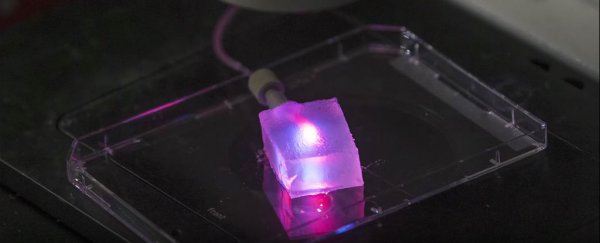The ability to accurately create artificial organs in the lab would change the world in ways we can't even imagine, but creating artificial capillaries - the tiny blood vessels that carry oxygen-rich nutrients to our organs and then scrub away the waste - has been one of the main road blocks. These vital networks of tiny tunnels are simply too small for current moulds to recreate, but scientists in the US think they've come up with a way to solve this problem: cotton candy machines.
Yes, the same machine that spins sugar into delicious puffs of childhood wonder might help us save countless lives thanks to its unique ability to produce intricate networks that are perfect for recreating capillary systems.
"The analogies everyone uses to describe electrospun fibres are that they look like silly string, or Cheese Whiz, or cotton candy," said one of the team, engineer Leon Bellan from Vanderbilt Univeristy.
"So I decided to give the cotton candy machine a try. I went to Target and bought a cotton candy machine for about $40. It turned out that it formed threads that were about one-tenth the diameter of a human hair - roughly the same size as capillaries - so they could be used to make channel structures in other materials."
In order to actually create the artificial system, the researchers first needed to find a material that wouldn't dissolve immediately in water, yet allowed them to make ultra-tiny threads like sugar does. After testing a slew of different options, they eventually landed on a material called Poly (N-isopropylacrylamide) - PNIPAM - which doesn't dissolve unless its temperature drops below 32 degrees Celsius.
The team then created a new, specialised cotton candy machine that was more in tune with the material and spun out a network of fake capillaries. After that, they made the imitation organ with gelatine and human cells. To hold all of this together, they added a very scary-sounding substance called 'meat glue' - an enzyme that's actually named transglutaminase that's quite common in the food industry.
This solution was then poured over the PNIPAM network and cooled so that the tiny fibres dissolve to create small tunnels or artificial capillaries.
Though the cotton candy technique works, the artificial capillary system hasn't been used in a full-blown organ yet - instead, the system lives inside a square piece of gelatine. It will take more research to figure out how to integrate them into fully functional organs.
But despite the fact that full organs are still a good bit of time away, the team's findings, which have been published in Advanced Healthcare Materials, prove that it is possible to create three-dimensional capillary systems in the lab.
Now, since the technique works, the researchers hope their continued research will allow them to recreate specific organ tissues. The end goal is to have templates for a bunch of different organs, so teams all over the world can create them easily.
